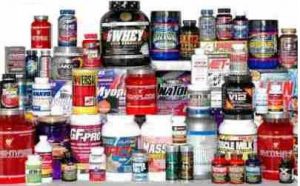
How to get paid for your freelance or online work? Here are some of the popular payment options including PayPal, Direct Deposit and a few others.
- Have you recently started freelancing and not sure how to ask for the payment (cash, check, etc.) from your client?
- Have you made some sales online and are expecting some commissions from the merchant?
In most probability, you’ll have to go for a direct deposit to your bank, or get paid via PayPal.
Its a Flat World
These days there are many who are self-employed, do freelance work (both offline & online), often internationally and in several cases they don’t even get to meet the client.
Though this is great news, as you can now potentially access a much larger client pool, it also has its own challenges, especially in terms of payment options and trust.
And because you and your client could be located in different countries, the laws regarding payment, transaction fees, legal fall-backs for chasing payment, will differ from country to country.
The good thing is that there are various payment options that you can consider, PayPal being one of the more popular options out there. You can also go for “Direct Deposits” to your bank, and probably consider Escrow for more scary transactions.
Why PayPal?
Here are some of the benefits of using PayPal (compared to a direct deposit):
- PayPal offers many more options
- You can use it to pay for items online, without writing a check (certain countries have restrictions on this)
- It accepts major credit cards via PayPal, the Paypal balance can be used to pay the balance of the card associated with the account. (Again, may not be available in all countries)
- You can set up a recurring payment for regularly used services (such as for membership programs).
- You get refunds quickly.
- Invoicing, tax info, and basic accounting can be done within Paypal.
Why Direct Deposit?
Here are some benefits of going for Direct Deposit (ACH deposits) to your Account:
- Cash deposited immediately (in most cases)
- Direct Deposits may not incur additional fees (for certain transactions). Paypal, on the other hand, charges a percentage of your payment as fees for every transaction (taken form the transaction amount).
More Alternatives to Paypal?
For those in the developed countries there are definitely many more options, besides Paypal, which is generally seen as the definitive way to pay people online.
PayPal, Google Checkout, Authorize.net are some of the secure, easy to use, and reasonable payment systems out there. In fact, most of them have moved beyond PayPal as they are expensive and also can be pretty difficult to deal with (customer service is not that great).
Besides, occasionally, in the name of security, they could hold your money under review, and subject your account to few more security checks.
However, its also a fact that for most webmasters, its the only workable option that they have as of now.
Depends on Your Client / Country
Though in most developed countries, you do have lots of flexibility when it comes to payment options, those in developing countries may not have access to several options and some of them could also be monitored/prohibited bu the local governing body.
In general, its seen that for smaller amounts (and for most cases), PayPal seems to be the preferred option.
But if its a bigger client and you’re expecting a bigger amount, you may not have much option but to take whatever the client pays you (could often by checks or direct deposits).
To Conclude
There are several modes of payment available, some of which offer more flexibility but involves a fee. PayPal definitely charges fees, but makes it much easier to pay / receive money. What you choose (PayPal, Direct Deposit or any other service) depends on how it benefits you and your business.
Which one do you prefer? If you’ve had a good experience with any other service, let us know here.









Leave a Reply